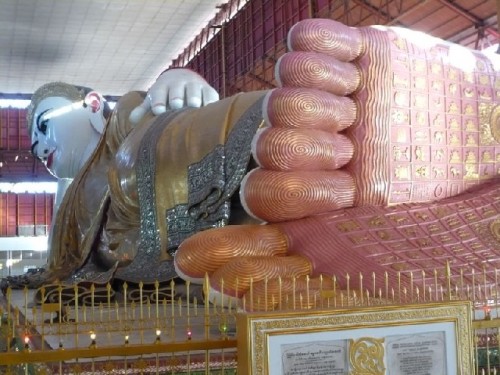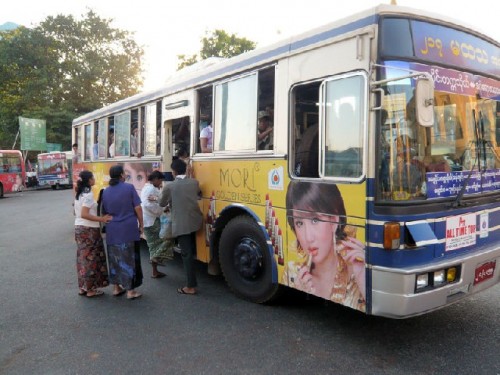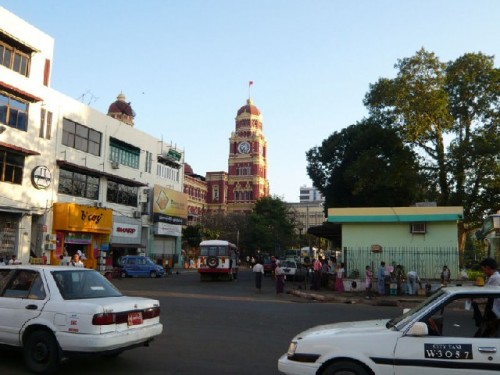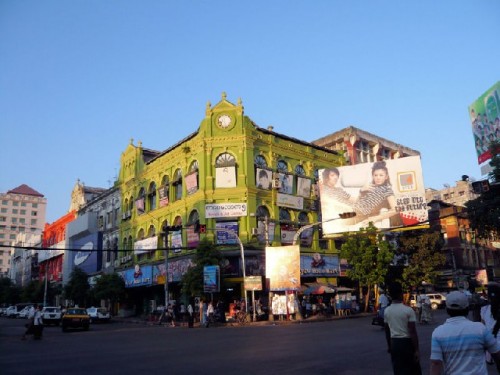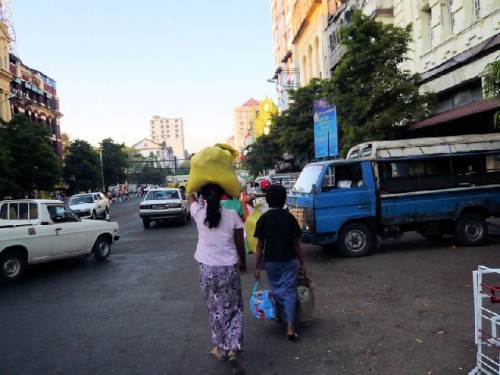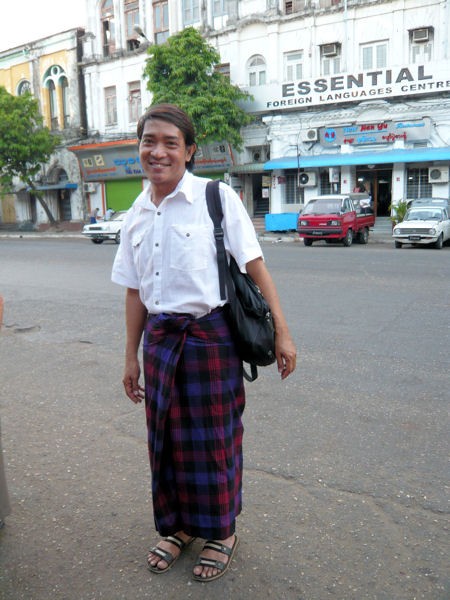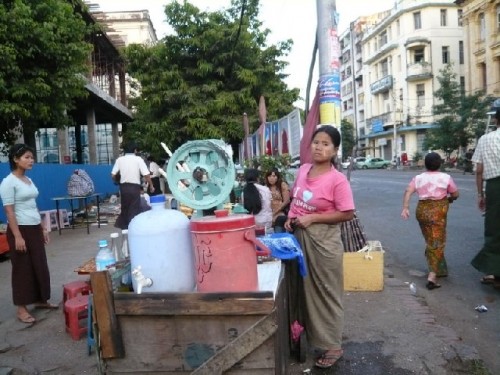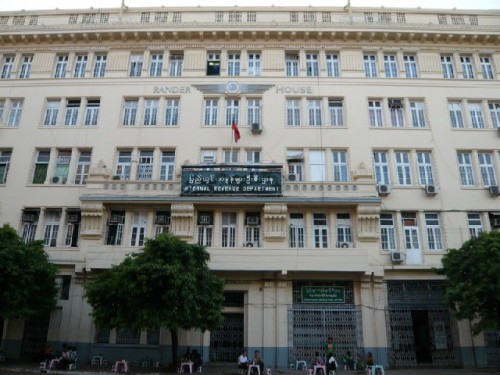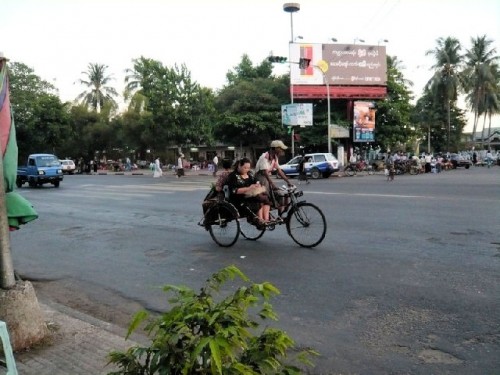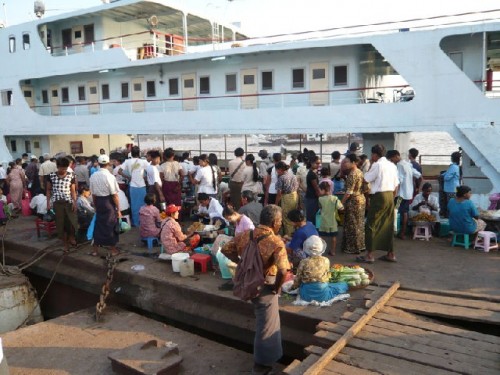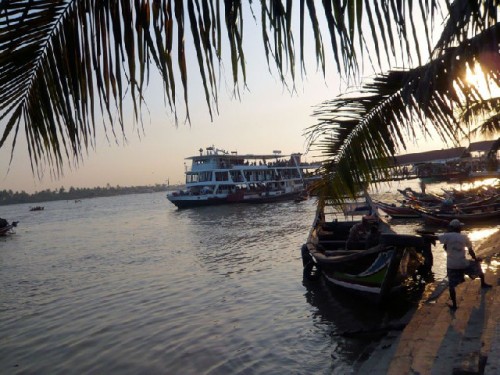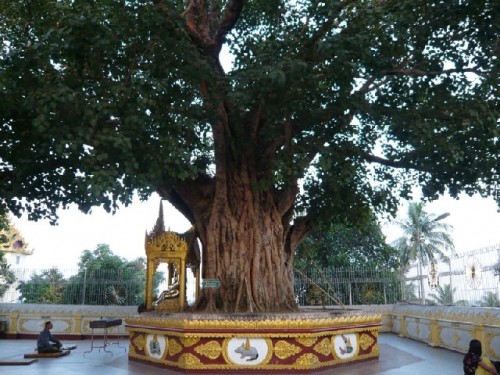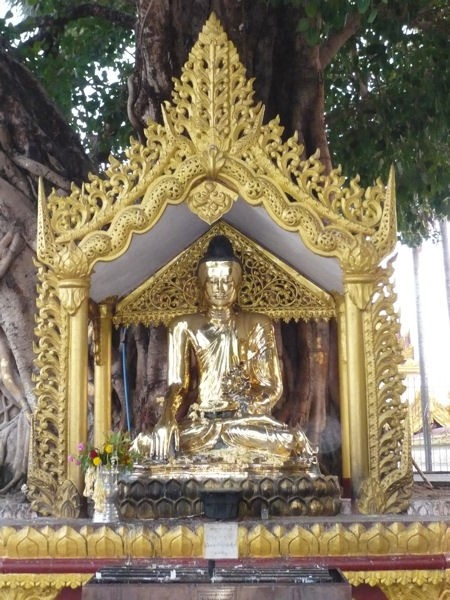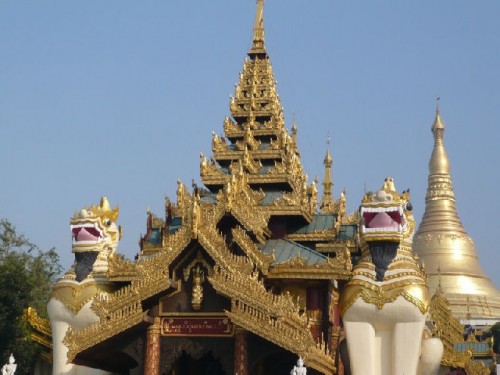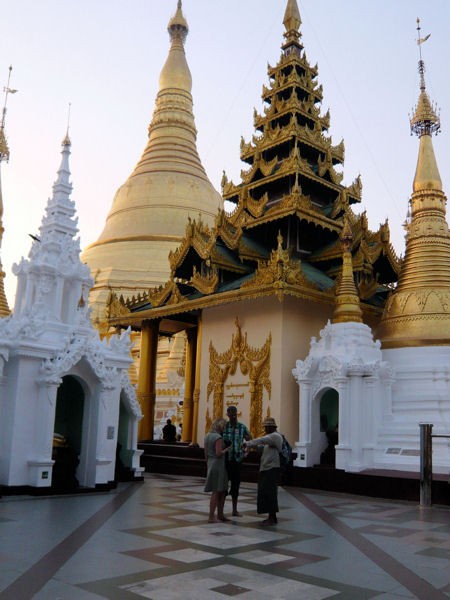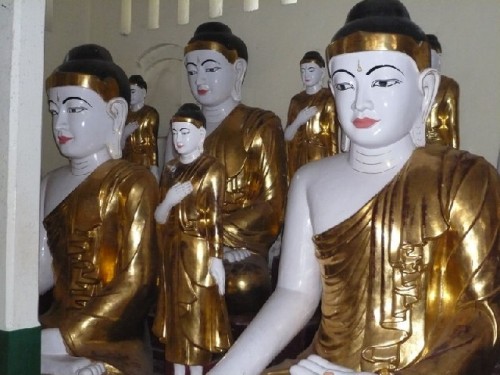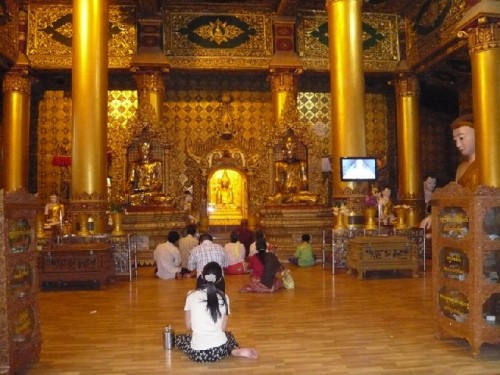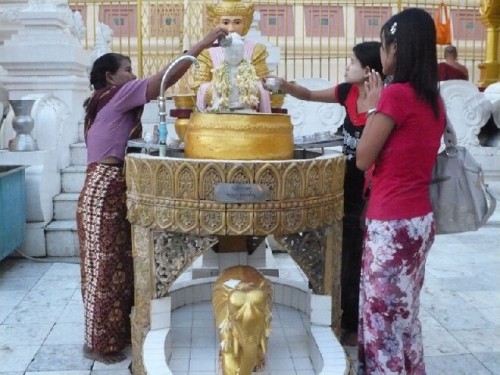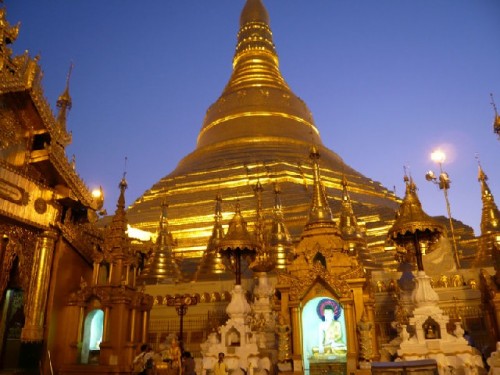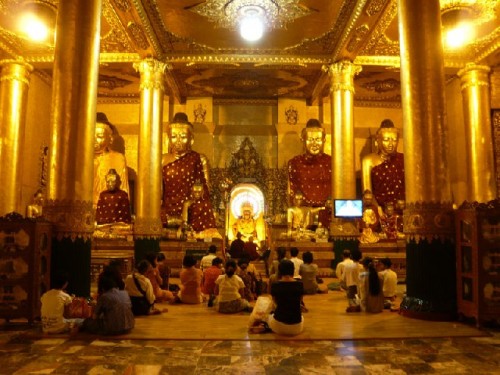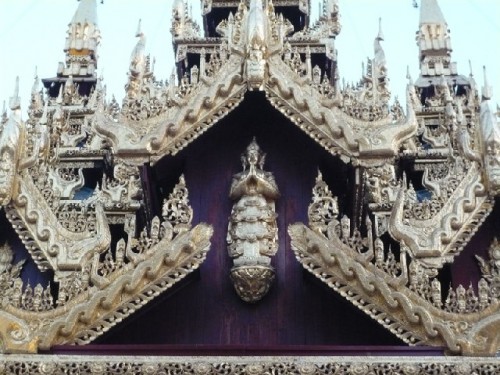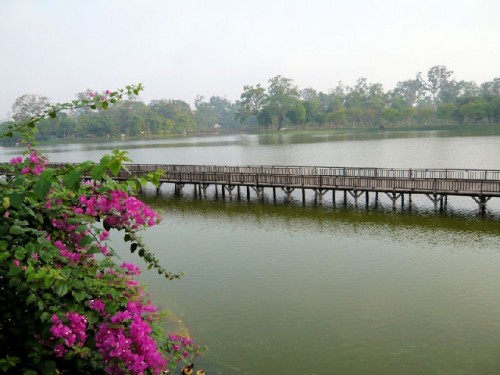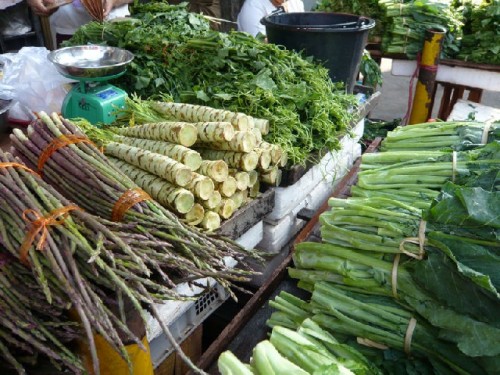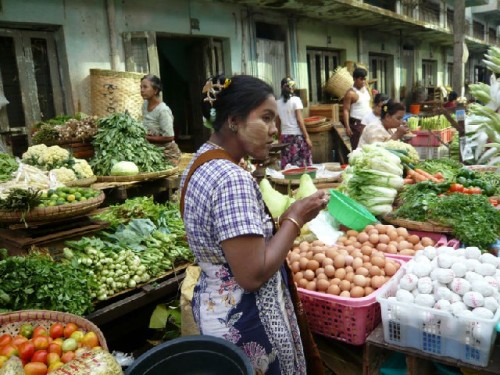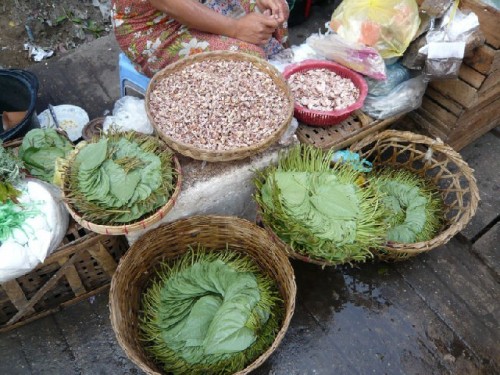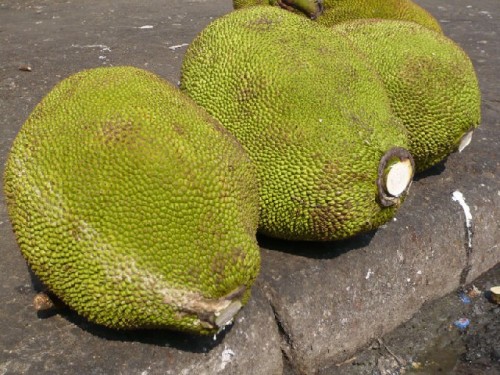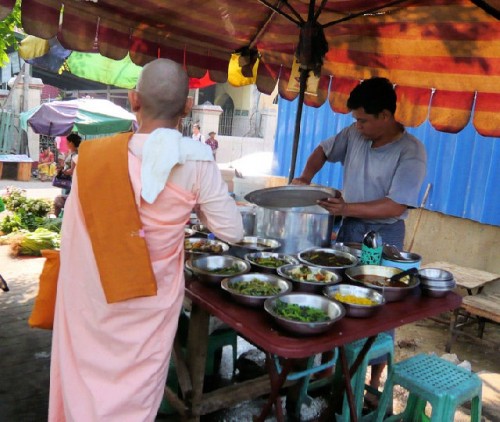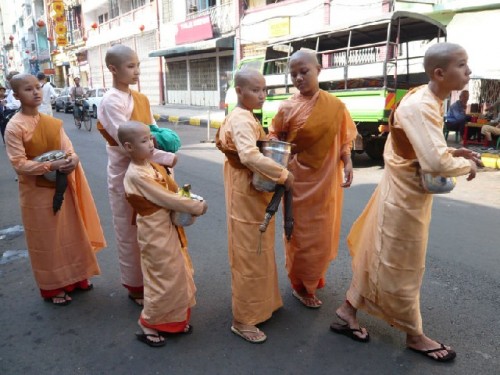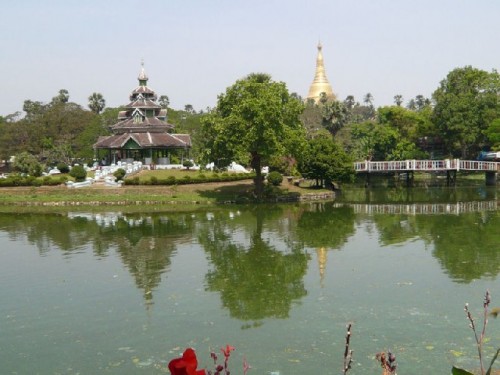Myanmar (Burma)
Part One: Yangon
By: Zeren Earls - Apr 10, 2010
My annual quest to discover distant lands led me to Southeast Asia in March of 2010. Myanmar (Burma) was a pre-trip on the "Ancient Kingdoms: Thailand, Laos, Vietnam and Cambodia" itinerary of Overseas Adventure Travel, an agency which promotes solo travel. Although I had been to all but Myanmar and Laos five years earlier, I decided to return to this region, which fascinates me. At the end of the trip, I broke away from the group to visit friends who live in Bali, Indonesia, thus adding a sixth country to my itinerary. Each of these countries requires a visa for Americans, necessitating a long lead time and many blank passport pages.
Bangkok airport serves as a hub for most international flights to Southeast Asia. To get to my destination in Yangon, Myanmar, I flew Delta Airlines from Boston to Minneapolis to Tokyo, and then on to Bangkok, where I had to spend the night in order to fly to Yangon the next day. After a total of twenty-two hours in the air, I arrived in Bangkok at 12:30 am, having lost a day by crossing the international date-line. The thermometer read 27 degrees Celsius.
The new Bangkok international airport is spacious and filled with specialty shops. It dazzles the eye with colossal mosaic sculptures, and offers efficient twenty-four-hour service. During the hour-long flight to Yangon with Bangkok Airways, we were served a delicious hot lunch featuring three kinds of organic rice — white jasmine, red fragrant and black fragrant — produced by an agriculture project in affiliation with the airline.
It was 37 degrees Celsius when we arrived in Yangon, formerly Rangoon, the colonial capital. Jan, our Burmese guide, met the five of us who had signed up for the pre-trip. He wore a longyi, a unisex sarong-like garment favored by most locals. The Kandawgyi Palace Hotel, located by the royal lake of the same name, was our home base for two nights, at the beginning and again at the end of our trip to Myanmar.
Our tour of Yangon began with a visit to the Chaukhtatgyi Pagoda with its 225-foot-long reclining Buddha, which has 108 distinguishing marks on the soles of its feet. By worshipping these marks, which represent different worlds, believers remember that Buddha is endowed with the attributes of the chief of the world and is the knower of all. Here we observed many monks praying and people using little buckets to water small Buddha statues for purification. The religious majority, representing 89% of the population, are followers of Theravada Buddhism.
A walking tour of downtown centered on the area around the 2,000-year-old Sule Pagoda, with tiered golden roofs along with British colonial architecture and tall modern structures. Decaying old buildings turned into slum houses occupied blocks with other structures used as government offices. Food vendors on sidewalks, women carrying bundles on their heads, advertisements painted on public buses and billboards, and laundry-filled balconies on apartment blocks all contributed to the visual cacophony of the old town. As day turned into night, golden pagodas lit up, creating a magical nightscape.
Although our two-day sightseeing had to be split between the beginning and end of our Myanmar visit due to an inevitable itinerary change, I will cover all of Yangon here, in order to keep my impressions of the city intact. Old Yangon is the business center, where most buildings are in need of repair. Traffic, noise, dirt, and heaps of trash are part of daily life, whereas suburban developments with villas, which constitute New Yangon, are quite a ways from the center. In Myanmar there are the rich and the poor; a middle class does not exist. Since 1962 the country has been ruled by a military dictatorship; the generals are among the wealthiest citizens.
The market visit took us through narrow alleys with small stalls jammed with goods. Myanmar's currency is the kyat, and the official exchange rate is 7 kyat to the US dollar, which commands a much higher rate on the black market. Since the dollar is accepted everywhere, I did not have to change money. I bought a T-shirt imprinted with the Burmese alphabet, which has thirty-two letters. Burmese is the principal language of 70% of the population, whose origins are in the Gobi Desert in Mongolia, with an additional 135 officially recognized ethnic groups. Burmese belongs to the Tibeto-Burman language family, though many Burmese words derive from Sanskrit, an Indo-European language.
Walking along the waterfront at day's end provided a glimpse into a different aspect of daily life. Commuters crowded into ferryboats to cross the shores of Yangon River, a tributary of the Irrawaddy. Vendors did brisk business as workers crowded around low tables with stools, enjoying food and camaraderie without the intense heat of the day.
The Shwedagon Pagoda is the cultural and spiritual heart not only of Yangon, but of the whole country. Believed to house relics of Buddha, including four strands of hair, the sacred site attracts pilgrims, who come to venerate Buddha and to meditate. The shining golden beauty of the pagoda is simply enchanting. Traditionally gilded since the 15th century, it is decorated even today with gold leaf laid by pilgrims. An estimated 100 tons of gold adorn the pagoda, which rises 322 feet above its base. The lower parts are covered in gold leaf, the upper parts in gold plate.
Covered stairways on all four sides of the large complex lead to a marble platform, on which the pagoda stands. Vendors sell devotional objects and souvenirs along these steps. In the middle of the platform stands the main stupa, surrounded by four large and sixty-four smaller stupas. Among the many structures on the platform are shrines flanked by planetary posts, each dedicated to a different day of the week. Here people born on the corresponding days offer their prayers and pour water over the Buddha and the appropriate animal. For instance, people born on a Monday have the tiger as their animal sign and pray by the planetary post for the Moon. From the many pavilions comes a soft murmuring of prayers, while others meditate and make offerings to nat spirits to ask for protection and good fortune. It was at this holy site that the monks began their protest march in September 2007.
Chinatown with its bustling market was another window onto local culture. With the approach of Chinese New Year, the streets were decorated with lanterns. Nuns in pink robes collected food from the various market stalls, while shoppers mingled among vegetables, fruit, poultry, and baskets of quail, duck and chicken eggs preserved in lime or mud, all considered delicacies, as are fertilized eggs. Men spun thin round sheets of rice dough in the air, flipping them onto hot sheet irons for spring rolls. Some vendors carried their goods on their heads; others spread them out on the sidewalk. Since there is no refrigeration in homes, people shop daily and consume many dried or preserved foods. The array of dried fish in the market was amazing. From very small round eggplants to very large jackfruit with drainable sap, and a cosmetic white powder made from tree bark the market visit offered many discoveries.
The National Museum, where no photography is allowed, displays the history, culture, literature and ethnic makeup of Myanmar. The displays include royal costumes, early toys, marionettes, baskets and other crafts. The Lion Throne of Myanmar's last monarch, King Thibaw, which was smuggled out to India by the British, was given back at the time of independence and now graces the museum's ground floor. There is also a maquette of the royal palace, which was burned down by the Japanese during World War 2; it has been reconstructed using old photographs.
Burmese food is mild and delicious. Standard fare is soup, steamed vegetables, fish or meat, and rice, with fresh fruit for dessert. Among our memorable meals were dinner at the Sakura Sky Lounge, where we enjoyed grilled fish over a bird's-eye view of the city by night and lunch at a Chinese restaurant, where our first course was fish balls and quail egg in clear broth. Breakfast spreads were Asian-style: soup, steamed or pickled vegetables, potatoes gratin, noodles or rice, and eggs or meat. There are no dairy products in the Burmese diet; condensed milk is imported from Thailand. While cereals were hard to come by, delicious omelets cooked to order were always available.
Upon arrival at the airport to fly to Bagan, we found out that our flight was delayed due to fog at our destination. The two-hour delay was an opportunity for us to observe the locals in their finery. Women with slight build and dark hair looked beautiful in longyi with flower patterns. Men wore longyi with stripes or checks. Jackets made of fine textiles complemented the longyi. Two TV screens showed non-stop commercials promoting glamorous looks with shampoo, make-up, silken hair, etc.
Finally in Bagan, we found out that poor visibility was the result of slash-and-burn farming in the central part of the country. Before the monsoon rains arrive, farmers burn their fields to enrich the soil, covering the skies with smoke. Waiting for the smoke to clear is standard airport procedure during certain months of the year. Despite the haze, Bagan still offered many highlights.


